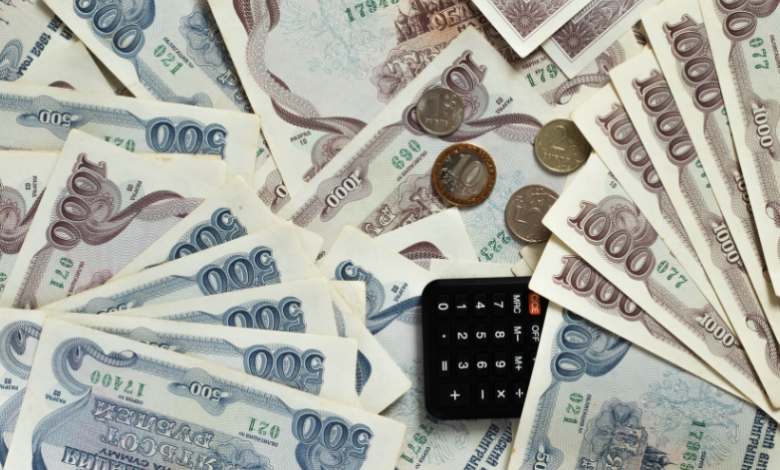The Power of vicarious sacrifice 1992

Welcome to a journey exploring the profound concept of vicarious sacrifice in 1992. As we delve into this powerful theme, we will uncover its history, examples, impact on society, and much more. Join us as we unravel the significance and implications of vicarious sacrifice in our daily lives.
What is Vicarious Sacrifice?
Vicarious sacrifice is a compelling concept that involves selflessly giving up something valuable for the benefit of others. It goes beyond individual gain, focusing on the well-being and welfare of those around us.
In essence, vicarious sacrifice encompasses the idea of putting others’ needs above our own, often without expecting anything in return. It requires empathy, compassion, and a willingness to make personal sacrifices for the greater good.
This form of sacrifice can manifest in various ways, whether through acts of kindness towards strangers or making sacrifices for loved ones. It embodies a sense of altruism and community spirit that transcends individual desires.
By understanding what vicarious sacrifice entails, we can cultivate a mindset centered on generosity and selflessness. In doing so, we contribute to creating a more compassionate and harmonious society where everyone’s well-being is valued.
The History of Vicarious Sacrifice in 1992
In 1992, the concept of vicarious sacrifice continued to hold significant meaning. It was a year marked by diverse events that showcased individuals willing to make selfless sacrifices for others’ well-being. From humanitarian aid workers risking their lives in war-torn regions to activists advocating for social justice, acts of vicarious sacrifice were prevalent.
The global landscape in 1992 saw movements like environmental conservation gaining momentum, with advocates sacrificing personal comfort for the greater good of the planet. Additionally, political figures made sacrifices by standing up against oppression and injustice, inspiring many around the world.
The history of vicarious sacrifice in 1992 is a testament to humanity’s capacity for empathy and altruism. Individuals from all walks of life demonstrated courage and compassion through their actions, leaving a lasting impact on society as a whole.
Examples of Vicarious Sacrifice in 1992
In 1992, the world witnessed remarkable examples of vicarious sacrifice that left a lasting impact on society. One such instance was seen in the heroic actions of first responders during natural disasters and emergencies. These brave individuals put their own safety at risk to save others, embodying the spirit of selfless sacrifice.
Another powerful example occurred in the realm of healthcare, where medical professionals worked tirelessly to care for patients amidst challenging circumstances. Their dedication and compassion towards those in need showcased the essence of vicarious sacrifice.
Furthermore, 1992 saw ordinary people stepping up to help strangers in times of crisis, demonstrating empathy and solidarity within communities. From small acts of kindness to significant gestures of support, these instances highlighted the strength found in collective sacrifice for the greater good.
These examples from 1992 serve as reminders of the profound impact that vicarious sacrifice can have on individuals and society as a whole.
Impact of Vicarious Sacrifice on Society
The impact of vicarious sacrifice on society in 1992 was profound. People coming together to support causes greater than themselves created a ripple effect of unity and compassion. Communities were strengthened as individuals selflessly gave for the well-being of others.
Through acts of vicarious sacrifice, societal values shifted towards empathy and altruism. The willingness to step into someone else’s shoes and alleviate their suffering brought about a sense of interconnectedness among people from all walks of life.
These acts not only benefited those directly involved but also inspired others to pay it forward, creating a domino effect of kindness and generosity. It highlighted the power individuals have in making a difference in the lives of those around them.
As we reflect on the impact of vicarious sacrifice on society, we recognize that small gestures can lead to significant changes when driven by compassion and empathy.
Comparison to Other Forms of Sacrifice
When comparing vicarious sacrifice to other forms of sacrifice, it’s essential to understand the nuances that differentiate them. While traditional sacrifices involve giving up something valuable directly, vicarious sacrifice takes on a more indirect approach by sacrificing for the benefit of others.
Unlike self-sacrifice where individuals personally endure hardship or loss, vicarious sacrifice allows for a sense of connectedness and empathy towards those being helped. This form of sacrifice transcends individual boundaries and fosters collective well-being.
In contrast to material sacrifices, which often involve tangible goods or resources, vicarious sacrifice focuses on emotional support, compassion, and understanding. It showcases the power of altruism in uplifting communities and strengthening bonds between individuals.
By acknowledging these distinctions, we can appreciate the diverse ways in which sacrificial acts manifest in our lives – each with its unique impact and significance.
The Psychology Behind Vicarious Sacrifice
The psychology behind vicarious sacrifice delves into the intricate workings of human empathy and altruism. It explores how individuals can experience emotional connections with others, driving them to make selfless acts on behalf of those in need.
When witnessing someone else’s suffering, our brains activate regions associated with empathy, triggering a desire to alleviate that pain through sacrificial actions. This phenomenon highlights the deep-rooted capacity for compassion within us all.
Psychologists suggest that vicarious sacrifice not only benefits the recipient but also enhances the well-being of the giver by fostering a sense of purpose and interconnectedness. Understanding this psychological mechanism can help us comprehend why some individuals are more inclined towards acts of selflessness than others.
By acknowledging and nurturing our innate ability to empathize and sacrificially support one another, we contribute to creating a more compassionate and united society.
Benefits and Drawbacks of Vicarious Sacrifice
When it comes to vicarious sacrifice, there are both benefits and drawbacks to consider. One of the main advantages is the sense of fulfillment and purpose that comes from helping others at a personal cost. By putting others’ needs before our own, we can experience a deep connection and empathy with those we support.
On the flip side, one drawback of vicarious sacrifice is the potential for burnout or emotional exhaustion. Constantly prioritizing others’ well-being over our own can lead to feelings of resentment or neglecting self-care. It’s essential to strike a balance between giving and replenishing our own energy reserves.
Moreover, another benefit of vicarious sacrifice is the ripple effect it can have on society. Small acts of kindness and selflessness can inspire others to pay it forward, creating a chain reaction of compassion and generosity.
However, one must be cautious not to fall into patterns of enabling or codependency when practicing vicarious sacrifice. Setting boundaries and knowing when to step back is crucial in maintaining healthy relationships while still offering support when needed.
How to Practice Vicarious Sacrifice in Daily Life
Incorporating vicarious sacrifice into daily life can be a powerful way to make a positive impact on others. One simple way to practice this is by actively listening to someone who needs emotional support, allowing them to feel heard and understood.
Another method is volunteering your time or resources for causes that help those in need, even if you’re not directly affected. By doing so, you are extending compassion and empathy beyond your immediate circle.
You can also educate yourself on social issues and advocate for marginalized communities, amplifying their voices and standing up for justice. Additionally, practicing random acts of kindness towards strangers or acquaintances can create ripple effects of positivity in the world.
Incorporating vicarious sacrifice into your daily routine can cultivate a sense of interconnectedness and empathy towards others around you.
Conclusion
The power of vicarious sacrifice in 1992 has shown us the profound impact that selflessly giving for others can have on individuals and society as a whole. Whether it was through acts of heroism, solidarity, or empathy, the willingness to sacrifice for the well-being of others has proven to be a driving force for positive change.
By understanding the history, examples, psychology, benefits, and drawbacks of vicarious sacrifice in 1992, we can better appreciate its significance and strive to incorporate this concept into our daily lives. Let us continue to practice empathy, compassion, and selflessness in our interactions with others, knowing that even small acts of sacrifice can make a significant difference in someone else’s life.
May we all harness the power of vicarious sacrifice to create a more connected and caring world where each individual’s well-being is valued and supported.



